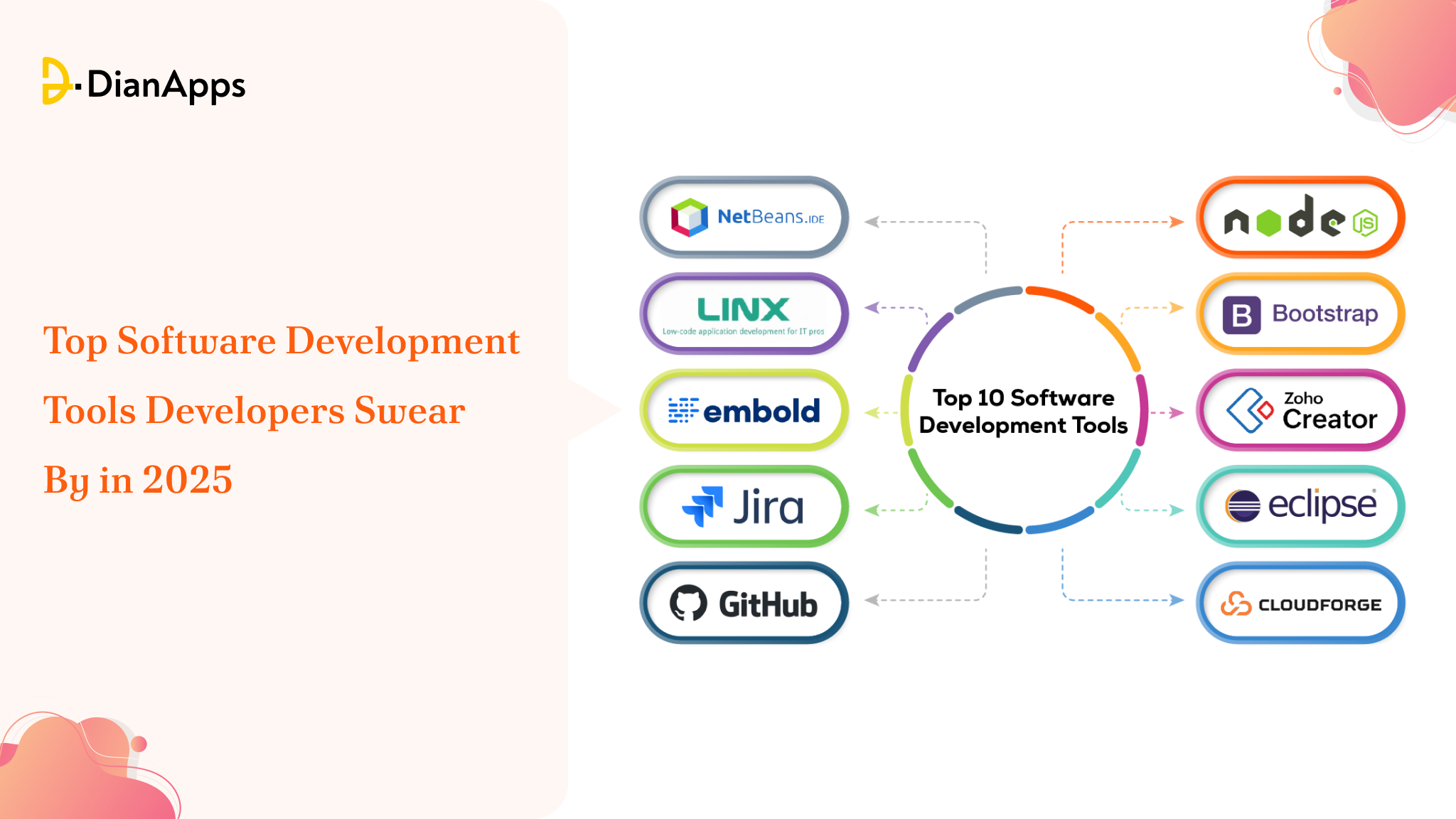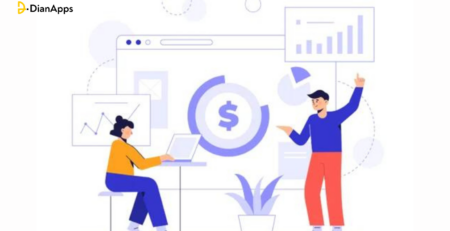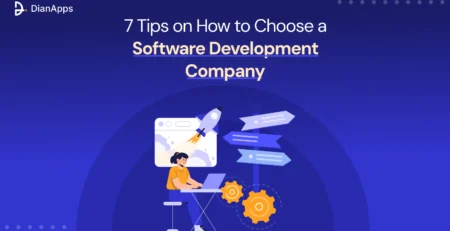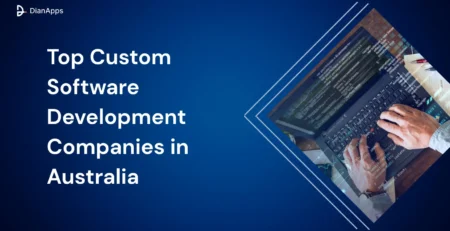Top Software Development Tools Developers Swear By in 2025
The good news is that businesses are still committed to investing in digital transformation initiatives despite the economic downturn.
According to the study, about 70% of businesses consider growth as their primary element, and technology “early adopters” saw faster and higher growth.
The business landscape in 2025 is marked by increased financial pressure due to record-high inflation. Leaders are being tested as they face the challenge of managing tighter budgets and driving greater returns on investment with fewer resources available.
The IT industry is predicted to increase at a compound annual growth rate of 5% by 2025 as more and more companies choose cutting-edge and creative software development services.
Why? because they understand that, in an ever-changing technological context, digital transformation is necessary.
To stay competitive and streamline operations, CIOs and CTOs are investing in the newest software technology and adjusting to trends.
By 2025, the software market is expected to be valued over $1 billion, and it is rapidly changing.
This demonstrates that the need for cutting-edge technology in software development is not going to go away anytime soon.
This article should thus be able to assist you if you wish to stay up to date on the most recent developments in software development and top software tools for the year 2025.
2025 Will Mark New Opportunities For Software Development
Over the years, software trends have changed, but a few significant developments this year will be particularly noticeable in 2025.
Low-code platforms are currently becoming essential to the business because of how quickly they reduce development time, while progressive web applications continue to be a preferred substitute for native app development.
However, the most recent developments in software development, including blockchain development, augmented reality, artificial intelligence, and the Internet of Things, are at an all-time high.
However, what does this signify for the trends in software engineering over the next few years? Moreover, how can software development firms help shape the future of these software technology trends?
To get a clearer view of the future, it’s beneficial to explore current trends in software development by comparing them with the predictions from last year. This way, we can see how far the software industry trends have reached, the emerging benefits of custom software development for businesses, and what may be on the radar for the upcoming months. Now, let’s take a look at each software development trend. Here we go!
1. The Technology Sector Is Making Significant Investments in Progressive Web Apps
Since its launch in 2015, Progressive Web Apps have been a lengthy journey. At last, this technology is getting the recognition and uptake it merits. Additionally, Emergen Research estimates that by 2027, the worldwide PWA market might be worth around USD 10.44 billion. In addition to lowering development costs, PWAs give website owners a great chance to enhance user experience with app-like features, as mobile usage is also rapidly increasing.
Know more about what is PWA and why are they need of the hour
2. The Use of Blockchain Technology Is Not Limited to the Financial Sector
In 2025, companies from a wide range of sectors will choose to adopt blockchain technology as it continues to upend the status quo.
This cutting-edge technology organizes data into distributed and decentralized networks that are nearly hard to hack or manipulate, providing unmatched security for tasks like transactions.
From the banking industry, which was the first to use this technology, to distribution, manufacturing, and healthcare, we may expect the Blockchain market trend to be worth an estimated $248.9 billion by 2029.
3. 2025 – The Year of 5G technology
As we approach a new technical age with the rapid 5G rollout, experts anticipate that over 1.4 billion devices globally will be connected to this network by 2025 – about 15% of the global total. Wonder why?
5G technology is far more advanced than its predecessor, 4G. It’s a completely new network design, not simply an update, and it has the potential to completely change the way we engage with and connect with the digital world.
In addition to improving user experiences, this breakthrough will hasten the development of cutting-edge software development technologies like artificial intelligence (AI), augmented reality, and the Internet of things.
This makes it simple to demonstrate that 5G technology-impacted mobile app development has a promising future and that the time to get ahead of the competition is now.
What’re you waiting for, then? Start getting your current apps ready for the blazingly fast 5G speeds, or release brand-new ones made especially to benefit from this cutting-edge software development technology!
4. The Internet of Things is Growing in Popularity
The extensive use and expansion of smart devices and IoT solutions portends an exciting future.
IoT devices allow us to link the digital and physical worlds, giving us remarkable insight into our daily activities, from industrial monitoring systems to connected houses.
Despite a brief setback at the start of 2020 as a result of a decline in technology spending in some industries, it bounced back fast and, according to IDC, is now expected to reach over US $437 billion in Asia Pacific alone by 2025.
Innovative advancements in AI, ML, and other technologies have increased the applicability of IoT solutions, from automation through edge computing to predictive capabilities made possible by machine learning algorithms.
5. The Low Code Development Trend Will Persist
Creating software applications can take a lot of time. What if there was a simpler method for making apps that required less coding? The best solution is low-code application development!
Gartner’s study suggests that enterprises of all sizes will adopt low-code development in the future. As to their projection, the adoption rate will rise over 50% within a decade.
Thus, the issue arises: how do we begin low-code development? What are a few of the strong use cases that a low-code platform can accomplish?
6. The Tech Industry Will Be Ruled by Python
As data science and machine learning continue to gain traction across industries, there will be a growing need for skilled Python app developers.
Businesses frequently require assistance selecting the best programming language for their app or web development project, as there are more than 700 languages available.
Python can legitimately be regarded the greatest toolbox of programming languages. It distinguishes out as a dynamic language capable of completing multiple functions – making it an ideal choice for addressing difficult assignments.
Its remarkable adaptability enables developers and companies to handle any work with remarkable efficiency, from website design to mobile app development and even machine learning models. It is understandable why IT and software development firms rely on its coding expertise.
Want to know some of the best Python frameworks for mobile app development? Go ahead and read it all!
7. Artificial Intelligence
The idea of becoming an AI everyday assistant is no longer limited to sci-fi enthusiasts who have aspirations of traveling to space.
These days, software firms all over the world utilize it extensively to develop predictive analytics and make data-driven decisions possible for their operations.
Businesses of all sizes, from tiny online marketplaces to tech behemoths, stand to gain from incorporating AI into their applications.
Take a look at these AI development trends, which provide a variety of creative ways to enhance your software products:
- Automated Machine Learning (AutoML) – From healthcare and finance to retail – AutoML will help streamline complex data sets while also drastically cutting down on model training time;
- Generative AI – Data from all sources, including images, videos, and sounds, will soon be used to create entirely original content, allowing businesses to generate new data for any purpose;
- Natural Language Processing (NLP) – NLP technologies will transform human-computer interaction by bridging the gap between man and machine through natural language understanding capabilities.
8. React Native Maintains Its Success
The most potent and widely used technology in the hybrid development space is React Native.
Its unmatched capacity to produce top-notch, cross-platform apps from a single codebase has transformed the industry and made app development easier for a great number of developers and companies.
React Native, the preferred option for hybrid development has shown itself to be an invaluable resource for companies looking to increase their presence in the constantly growing worldwide market, and its impact is only growing.
9. Virtual Reality and Augmented Reality Era
Virtual and augmented reality are revolutionizing e-commerce by having a profound impact on how companies and customers communicate.
The incorporation of AR/VR technology breathes life into the virtual shopping experience by allowing shoppers to envision items in their environment, resulting in improved engagement, and confidence and increasing sales.
As the era of digital transformation continues to develop, organizations are embracing AR’s fascinating qualities, such as:
- 3D modeling,
- Digital showrooms,
- Try-on tools
Furthermore, the quick development of AR/VR technology has made it more accessible and reasonably priced, allowing small and medium-sized enterprises to benefit from improved virtual experiences.
10. FinOps and GreenOps’ Ascent
In the rapidly changing world of cloud computing, the FinOps and GreenOps movements have emerged in recent years, solidifying their place as the newest trends in software development.
This creative combination has quickly become a top trend in the corporate world, which is not surprising given that more businesses are realizing the benefits of simplifying their financial procedures, operations, and environmental sustainability initiatives.
FinOps focuses on boosting efficiency across multiple financial operations, whereas GreenOps stresses applying eco-friendly methods for long-term value development.
11. NFT Tokens: A New Development in the Cryptocurrency World
Non-fungible tokens, or NFTs, are the newest cryptocurrency craze to acquire popularity and importance in 2025. NFTs are, in fact, digital content components that are linked to cryptocurrencies like Bitcoin and Ethereum as well as the Blockchain.
Since each NFT is distinct and not interchangeable, no two NFTs are alike. For this reason, there has been a notable shift in recent years toward blockchain-based payments. It is arguably the most often used payment option in software development outsourcing. Nevertheless, it makes it possible for businesses and vendors to make payments in a safe, quick, dependable, and transparent manner.
Also read: A primer on NFT: What it is and how its being used?
The NFT market has been incredibly popular in the sector in recent years. Additionally, according to a Grand View Research analysis, the NFT market is projected to expand at a rate of 34.2% between 2023 and 2030. Every day, almost 40,000 tokens worth $100 million are sold.
Although NFTs are not regarded as a trend in software development, it is one of the newer digital trends of the modern period. NFTs may be a new source of income for small enterprises, as evidenced by the fact that many users relate them to digital art that they own and then sell for a higher price.
12. The XOps Emergence
One of the revolutionary trends to look out for in 2025 and beyond is XOps, which stands for everything operations (such as DevOps, SecOps, and AIOps). It is becoming more and more well-liked as businesses look to eliminate organizational silos and enhance teamwork. This all-encompassing strategy combines several operating procedures to improve responsiveness and efficiency.
Software development teams may increase communication, decrease bottlenecks, and streamline processes by implementing XOps. As a result, high-quality software is delivered more quickly, enabling businesses to react to market needs more quickly. You will also become more agile and have a much better chance of innovating and staying ahead of the competition.
Top Software Development Tools For Developers to Know in 2025
As software development continues to evolve, developers need to stay updated with the latest tools that enhance productivity, streamline workflows, and improve code quality. Whether you’re a beginner or an experienced developer, leveraging the right tools can make a significant impact on your development process.
Visual Studio Code (VS Code)
Best for: Code Editing, Debugging, Version Control
Why Use It?
Visual Studio Code remains a favorite among developers due to its lightweight yet powerful features. With built-in IntelliCode AI, real-time collaboration via Live Share, and an extensive marketplace of extensions, VS Code offers flexibility for multiple programming languages, including JavaScript, Python, C++, and more.
Key Features:
- AI-powered code suggestions
- Seamless GitHub and Git integration
- Extensive extensions for customization
- Multi-language support
GitHub Copilot
Best for: AI-Powered Code Suggestions
Why Use It?
GitHub Copilot, powered by OpenAI’s Codex, is an AI-driven coding assistant that suggests entire lines or blocks of code in real-time. It significantly reduces development time by helping developers write cleaner, more efficient code with minimal effort.
Key Features:
- AI-powered autocompletion for code
- Supports multiple programming languages
- Context-aware code generation
- Increases development speed
Docker
Best for: Containerization, DevOps, Cloud Deployments
Why Use It?
Docker simplifies application deployment and management by packaging software into containers. This ensures applications run consistently across different environments, reducing compatibility issues between development, testing, and production.
Key Features:
- Lightweight containers for easy deployment
- Cross-platform compatibility
- Scalable and secure infrastructure
- Works with Kubernetes for orchestration
Postman
Best for: API Development, Testing, Collaboration
Why Use It?
Postman is a must-have for developers working with REST, GraphQL, and SOAP APIs. It provides an intuitive interface for testing, monitoring, and automating APIs, improving collaboration between backend and frontend teams.
Key Features:
- API automation and testing
- Mock servers for rapid development
- Built-in debugging and monitoring tools
- Supports API documentation and collaboration
Jira
Best for: Agile Project Management, Task Tracking
Why Use It?
Jira is a popular tool for Agile and Scrum-based development, helping teams plan, track, and manage software projects efficiently. It integrates seamlessly with other Atlassian products and DevOps tools.
Key Features:
- Agile sprint planning and tracking
- Customizable workflows and dashboards
- Seamless integration with Confluence, Bitbucket, and GitHub
- Real-time reporting and analytics
Firebase
Best for: Backend Development, Cloud Functions, Database Management
Why Use It?
Google’s Firebase is an excellent Backend-as-a-Service (BaaS) solution, offering a suite of cloud-based tools like authentication, real-time database, hosting, and cloud storage. It’s widely used in mobile and web app development.
Also read: How to integrate push notifications in React Native using Firebase
Final Thoughts
As we step into 2025, the software development landscape continues to evolve, bringing forward tools that enhance productivity, collaboration, and efficiency.
From powerful IDEs and frameworks to robust DevOps and testing solutions. Developers have an array of options to streamline their workflow. The right set of tools depends on project requirements, team dynamics, and technological advancements.
Staying updated with the latest tools ensures that developers can build high-performing, scalable, and secure applications.
By leveraging these cutting-edge solutions, development teams can not only boost efficiency. But also drive innovation in an ever-competitive tech ecosystem.




